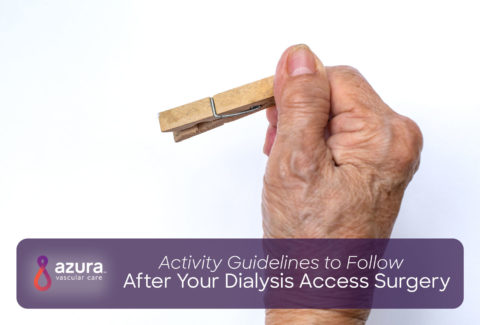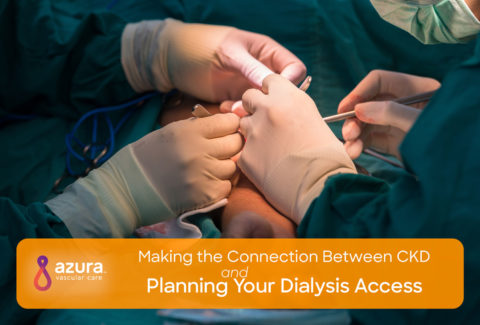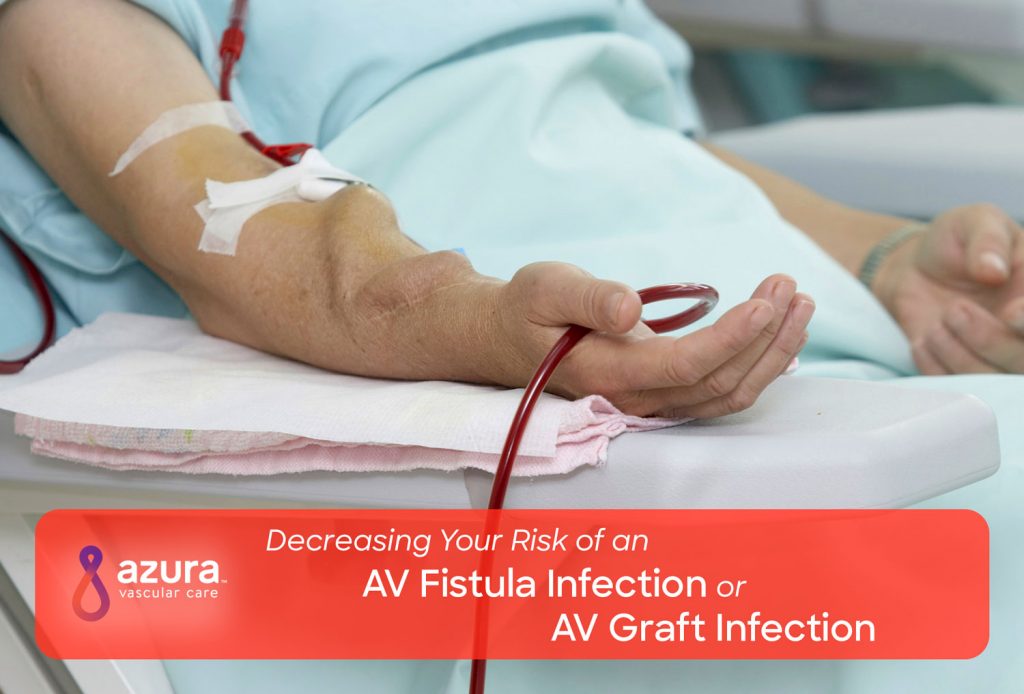
If you’re on hemodialysis, you may already have an AV fistula or AV graft in place. You also know that hemodialysis involves the frequent use of needles to access a dialysis patient’s blood stream.
Due to the repeated needle sticks, patients on hemodialysis have an increased risk of infection. Any type of opening in the skin can be an entry point for bacteria and it is extremely important to keep your access site healthy to help to ensure that your dialysis treatment is effective.
Your best defense against an AV fistula infection or AV graft infection is a good offense.
AV Graft
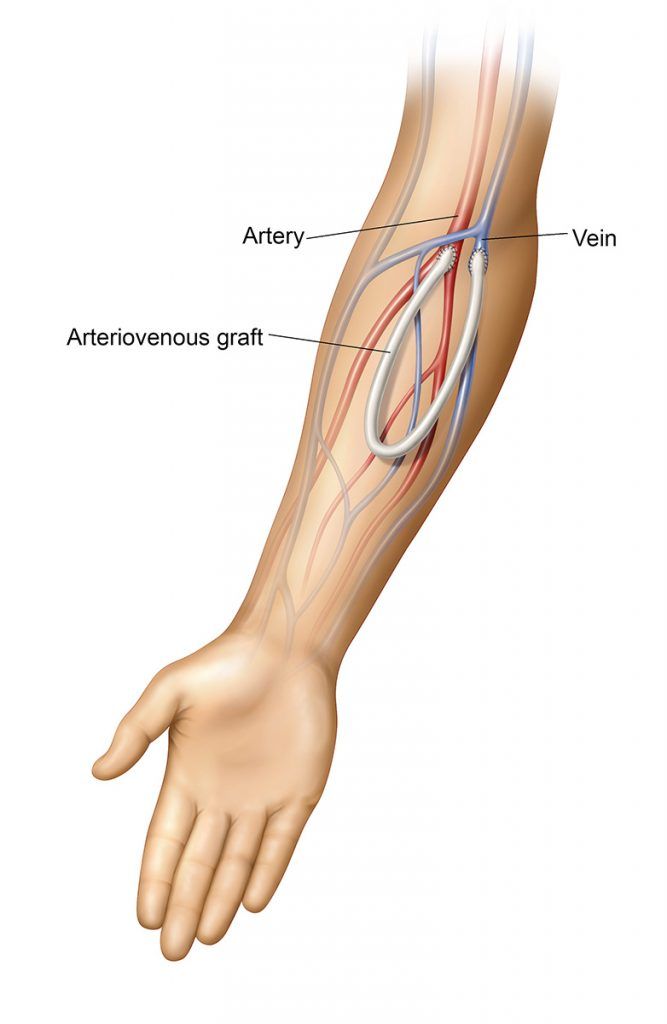
AV Fistula
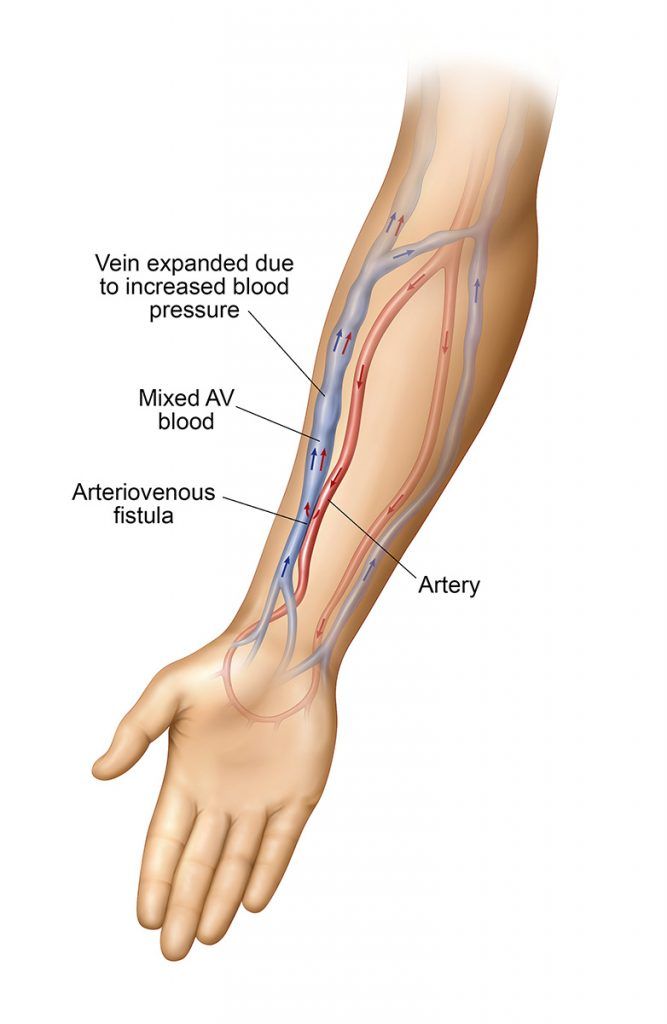
Risk Factors for Developing an AV Fistula or Graft Infection
End-stage renal disease affects the body’s natural immune system, increasing the risk of developing infections, including antibiotic-resistant infections. Infection is the most common cause of death for dialysis access patients. (1) Along with clotted access and bleeding—it is among the most common complications for all vascular access types.
In fact, rates of hospitalization for infection for dialysis patients have increased 43 percent since 1993. (2)
Risk factors for developing an AV fistula or graft infection include: (3)
- Poor hygiene
- Diabetes
- Skin wound
- Having a buttonhole access, a type of access that creates a “tunnel” of scar tissue for the dialysis needle to be placed through.
Caring for Your Access
Keeping your access clean and protected can help you prevent issues such as infection and clotting. To keep your fistula or graft free from infection:
- Wash with an antibacterial soap each day. (4)
- Wash with antibacterial soap before dialysis. (4)
- Inspect your access site for changes in appearance. (5)
- Don’t scratch your skin or pick a scab. (4)
- Avoid clothing that rubs against your access. (5)
- Do not sleep in a position that irritates your access. (5)
- Ask your dialysis care team to rotate the needle placement sites when you have your dialysis treatment. (4)
Signs of Infection
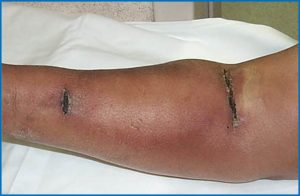 The signs of an arteriovenous access-site infection are:
The signs of an arteriovenous access-site infection are:
- Swelling or redness of your access arm or hand and the access site area
- Soreness or tenderness at the access site
- Any drainage or pus along the access
- Redness starting from your access site and spreading outward
- A feeling of excessive warmth surrounding your access site and in your arm and hand
- Fever
If you notice any signs of an AV fistula or graft infection, call your doctor immediately. If your doctor suspects an infection, he or she may order a blood culture test to determine the organism responsible for the infection or draw blood to measure your white blood cell count, an important indicator of infection. (3)
Treating an AV Fistula or Graft Infection
Your doctor will most likely treat an AV fistula infection or an AV graft infection with antibiotics. The length of the course of antibiotics will depend on the type of infection. Treatment may be as short as two weeks or as long as six weeks. (3)
Surgical revision or removal of the fistula or graft may be needed if the infection does not improve. (3)
For more information, download Understanding Your Dialysis Access or call 866.996.9729 to schedule an appointment with a vascular specialist.
Sources:
(1) Pantelias, K. (2012). Vascular access today. World Journal of Nephrology, 1(3), 69. doi:10.5527/wjn.v1.i3.69.
(2) Lok, C. E., & Foley, R. (2013). Vascular access morbidity and mortality: Trends of the last decade. Clinical Journal of the American Society of Nephrology, 8(7), 1213-1219. doi:10.2215/cjn.01690213.
(3) MacRae, J.M., Dipchand, C., Oliver, M., Moist, L., Yilmaz, S., Lok, C., … Miller, L. M. (2016). Arteriovenous access: Infection, neuropathy, and other complications. Canadian Journal of Kidney Health and Disease. https://doi.org/10.1177/2054358116669127.
(4) National Kidney Foundation. (2017, February 03). Hemodialysis access. Retrieved October 19, 2018, from https://www.kidney.org/atoz/content/hemoaccess.
(5) Fresenius Kidney Care. (n.d.) Caring for your access is key. Retrieved November 6, 2018, from https://www.freseniuskidneycare.com/ckd-treatment/types-of-dialysis-access.

